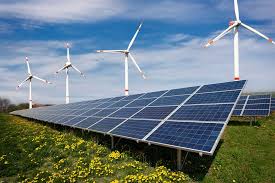India achieves 100 GW solar PV module capacity under ALMM: MNRE
India’s empanelled solar photovoltaic (PV) module manufacturing capacity under the Approved List of Models and Manufacturers (ALMM) has touched 100 gigawatts (GW), the Ministry of New and Renewable Energy (MNRE) said on Wednesday.
The 100 GW solar module capacity developed is fully listed under the government’s ALMM, which specifies the solar PV modules and manufacturers eligible for use in government and government-assisted solar projects. It ensures that only quality-assured and compliant modules are used, thereby promoting reliability and performance in the country’s solar energy sector.
The ALMM order was issued by the MNRE in January 2019, and the first list of approved solar PV modules was published in March 2021 with an initial empanelled capacity of around 8.2 GW.
Prime Minister Narendra Modi, in a post on X (formerly Twitter), described the development as “yet another milestone towards self-reliance.” He said, “It depicts the success of India’s manufacturing capabilities and our efforts towards popularising clean energy.”

Union Minister for New and Renewable Energy Pralhad Joshi echoed the sentiment on the same platform, highlighting the growth in solar PV manufacturing capacity from just 2.3 GW in 2014 to 100 GW in 2025. He added that India is building a robust, self-reliant solar manufacturing ecosystem, supported by transformative initiatives such as the Production Linked Incentive (PLI) scheme for high-efficiency solar modules.
This achievement strengthens our path towards Atmanirbhar Bharat and the target of 500 GW non-fossil fuel capacity by 2030,” Joshi said.
The MNRE said the milestone reflects not just the depth of capacity achieved, but also the breadth of participation in the sector. The number of manufacturers listed under ALMM has increased significantly from 21 in 2021 to 100 currently, who are operating 123 manufacturing units across the country.
This growth includes contributions from both established companies and new entrants, many of whom have adopted high-efficiency technologies and vertically integrated operations. The result, the ministry said, is a diverse and competitive manufacturing landscape capable of fulfilling domestic demand and serving global markets.
India achieving 100 GW of solar PV module manufacturing capacity is a significant step towards building a diversified solar supply chain, said Rishabh Jain, Senior Programme Lead at the Council on Energy, Environment and Water (CEEW).
“However, this is currently four times India’s annual deployment of solar power. To ensure the continuous growth of the sector, Indian manufacturers should actively supply to new markets and reduce their dependency on the US. Simultaneously, Indian manufacturers should double down on R&D to competitively manufacture next-generation materials and components in India,” Jain said.
This article has been republished from The Business Standard.

